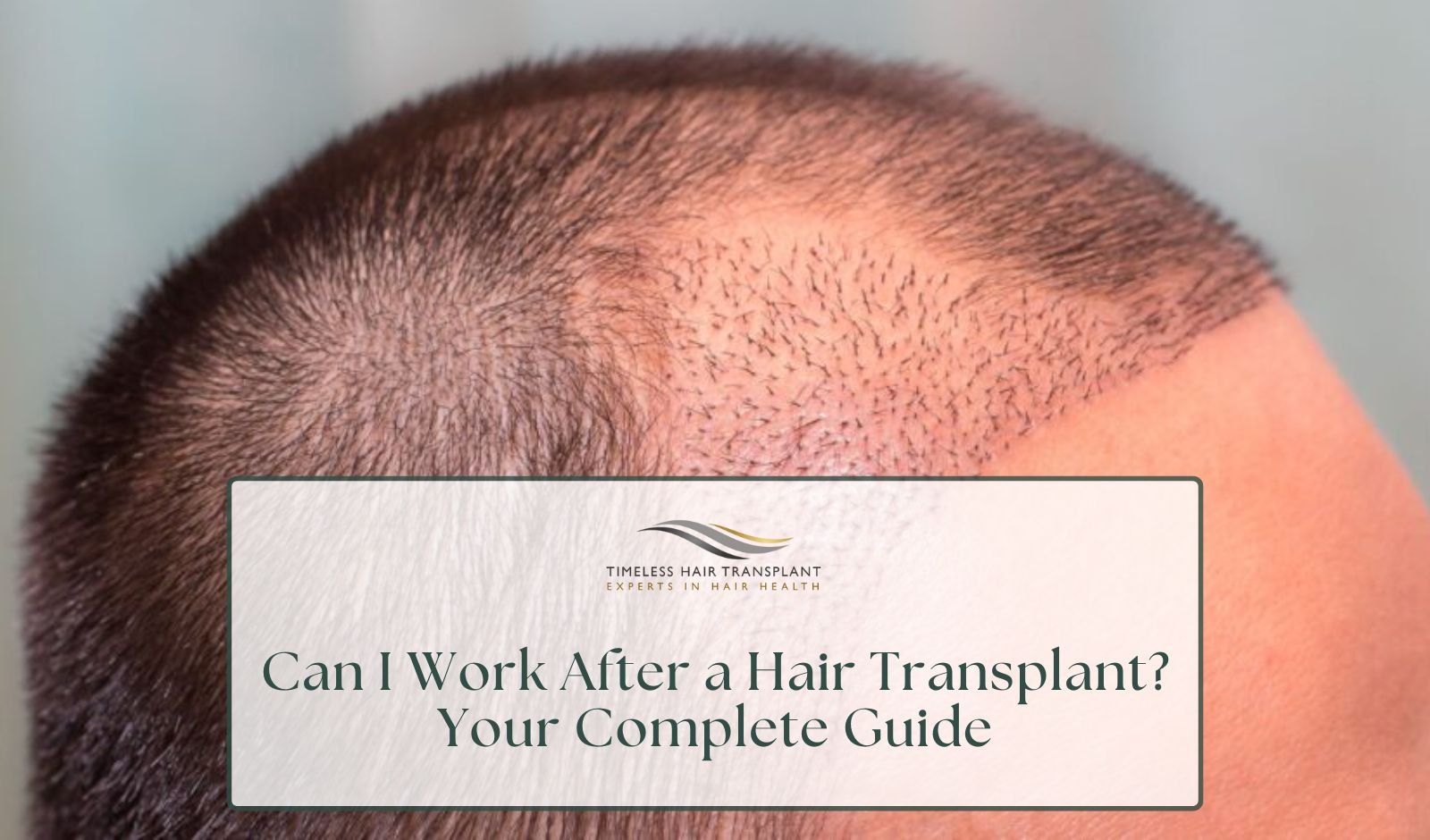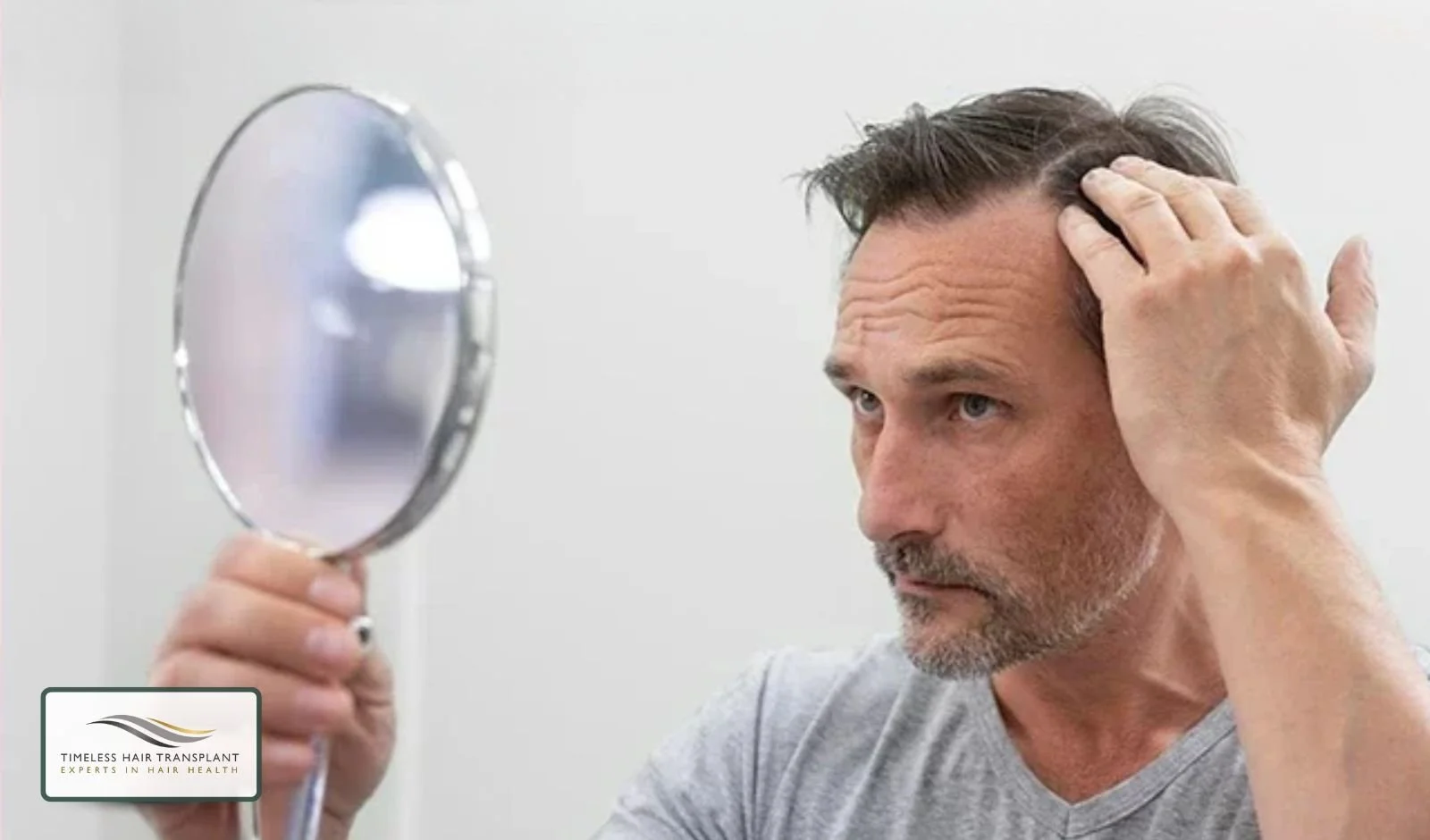Can I Work After a Hair Transplant? Your Complete Guide
It’s normal to wonder, “Can I go to work after a hair transplant?” or “How soon can I work after hair transplant surgery?” These are some of the most common questions patients ask while planning their recovery. Restoring your hair is exciting, but giving your scalp time to heal is just as important for achieving natural results.
This guide will explain what happens after a hair transplant procedure, when it’s safe to return to work, and what you should know about physical activities like exercise. By following the right aftercare, you’ll protect your new grafts and support long-term hair growth.
What Happens During the Recovery Process?
Once you complete your hair transplant surgery, either FUE (Follicular Unit Extraction) or FUT (Follicular Unit Transplantation), your scalp will begin the healing process. The goal is to ensure the transplanted hair follicles safely settle into the scalp and start promoting healthy hair growth.
General Timeline
Days 1-3:
Expect some soreness, redness, and swelling around the donor area and graft sites. Your scalp will be tender, so avoid touching or wearing tight headgear.
Week 1:
Scabs will begin to form around the newly transplanted hair grafts. These scabs are part of the natural healing process and will fall off on their own. The donor area will also begin to settle.
Weeks 2-3:
Most visible signs of surgery (like redness or swelling) will have subsided. You may begin to notice slight shedding of transplanted hair follicles; this is normal and temporary.
6-12 Months:
Over the coming months, you’ll start seeing real hair growth. Final hair transplant results typically become visible after one full year.
Can I Go Back to Work After a Hair Transplant?
Yes, but when you return to work depends on the type of job you have.
For office jobs or remote work that doesn't involve physical activity, most patients are able to return within 2 to 5 days post hair transplant. The main recovery concern during this time is avoiding sweat, sun exposure, or head trauma.
If your job is physically demanding, such as construction, outdoor work, or jobs involving bending, lifting, or sweating, you’ll want to wait at least 7 to 14 days before returning. Physical strain increases blood pressure, sweat production, and the chance of dislodging hair grafts from the scalp, which can lead to hair transplant failure.
Before heading back to work, speak with your hair transplant surgeons to ensure you’re cleared based on your individual healing progress.
Can You Work Out After a Hair Transplant?
Not immediately. Exercise after a hair transplant should be introduced slowly and with caution.
Here’s a breakdown of when and what’s safe:
Days 1-5: Avoid all forms of physical activity. Let your scalp rest. Any strain could interfere with healing or lead to graft rejection.
Days 6-10: You can resume light exercises like walking indoors. Avoid sweat, heat, or sun exposure that could affect the donor area or scalp.
After 14 Days: You may return to light exercises such as gentle yoga, slow cycling, or resistance training. Still avoid contact sports or strenuous exercise.
4 Weeks Post Surgery: You may resume most activities unless otherwise directed by your surgeon. Always monitor for scalp irritation, and never rush your exercise routine back into full intensity too early.
Recovery Tips to Support Long-Term Success
Returning to work or working out is important, but here are a few ways to promote smooth healing during the recovery process:
Avoid wearing a hat during the first few days. When safe, choose a soft, breathable cap that doesn’t press tightly on your scalp.
Maintain good hygiene by gently cleaning the treated areas as advised by your hair transplant clinic.
Avoid sun exposure, dirt, or pollution that may interfere with healing or cause infection.
No matter how itchy it gets, avoid scratching your scalp. This could damage newly transplanted hair and delay healing.
These actions all support your body’s natural ability to heal and improve your chances of a successful hair transplant result.
Why Proper Recovery Matters
Being patient can be tough, but the recovery phase is just as critical as the hair transplant procedure itself. Jumping back into physical activities too soon can lead to:
Dislodging hair grafts, which affects long-term results
Risk of infection in the donor area or transplant site
Slower healing or damaged hair follicles
Permanent damage that leads to failed hair restoration
Recovery isn’t forever, but the results can be. Taking a little extra time in the early weeks post surgery can mean better hair growth, more even coverage, and fewer complications.
Why Choose Timeless Hair Transplant?
At Timeless Hair Transplant, recovery doesn’t stop when your procedure ends. Led by Dr. Luciano Sciacca, we provide personalised care plans to guide you safely through healing while protecting your long-term results.
Here’s why patients trust us:
✔ Advanced FUE and FUT techniques for natural outcomes
✔ Careful protection of the donor area
✔ Step-by-step support through the post-operation phase
✔ Recovery guidance tailored to your job and lifestyle
✔ Clear communication with honest, transparent pricing
By following expert guidance and giving your hair grafts time to heal, you’ll enjoy lasting, natural results with confidence. Call +44 (0) 7516294471 today to book your free consultation and take the first step toward restoring your hair and your confidence.




